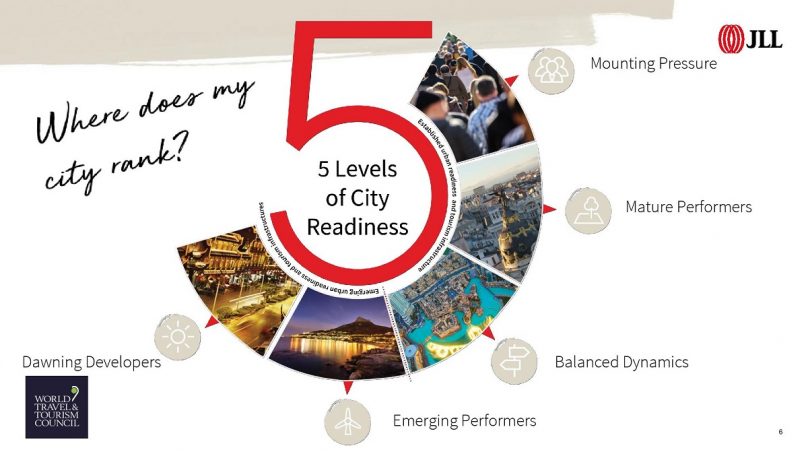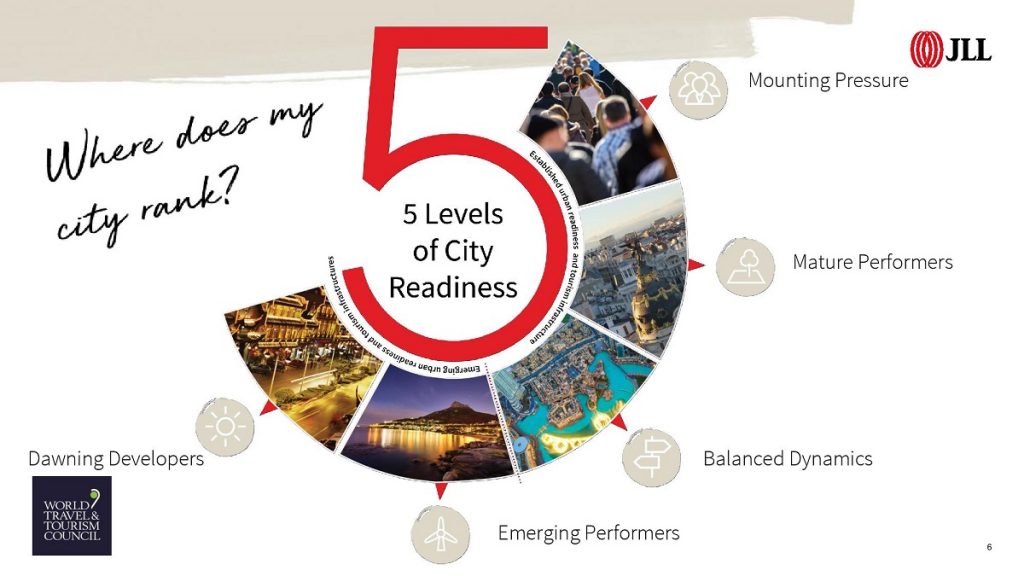
 Marking a first-ever assessment of cities’ readiness for tourism growth, WTTC and JLL have teamed up to evaluate and deliver solutions that foster sustainable growth in tourism activity.
Marking a first-ever assessment of cities’ readiness for tourism growth, WTTC and JLL have teamed up to evaluate and deliver solutions that foster sustainable growth in tourism activity.
Data on more than 70 indicators was analyzed. The index measures and categorizes 50 global gateway cities into one of five levels of ‘readiness’ and provides actionable solutions to foster sustainable growth in tourism activity.
The index came up five different city categories.
Dawning Developers: Cities with an emerging tourism infrastructure. However, they have a slower tourism growth and a lower visitor concentration. But they still have room to grow. The index named both Cairo and Riyadh under this category.
Emerging Performers: Cities with an emerging tourism infrastructure. They also have a growing tourism momentum and the start of increasing pressures related to tourism growth: Istanbul
Balanced Dynamics: Cities that are often financial hubs, where business travel is more active than leisure. However, they have an established tourism infrastructure and potential for travel and tourism growth. Dubai embodies this category.
Mature Performers: Cities with strong leisure and/or business travel dynamics and an established tourism infrastructure. However, the risk of future strains related to visitor volume, infrastructure or activity that is testing readiness for additional growth.
Mounting Pressure are cities with high growth momentum. Leisure travel is the main driver. They also have an established tourism infrastructure. However, these cities face pressures to manage high visitor volumes.
None of the MENA cities was listed in these two categories.
With this novel framework, city planning authorities and legislators, investors and real estate developers, tourism organizations as well as travel and tourism companies can evaluate global cities’ readiness for future expected tourism volumes by 2030.
Add to Favorites














